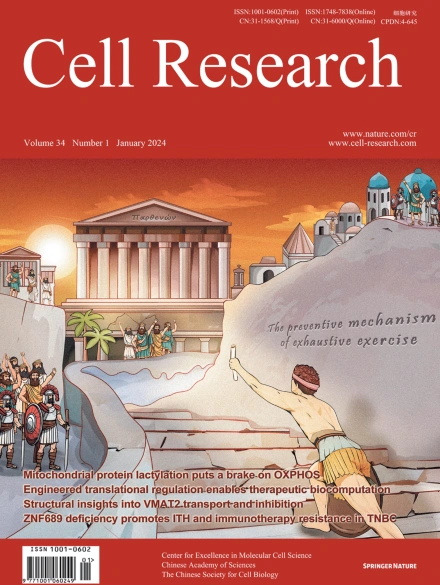
Advanced Search
Submit Manuscript
Advanced Search
Submit Manuscript
Volume 34, No 1, Jan 2024
ISSN: 1001-0602
EISSN: 1748-7838 2018
impact factor 17.848*
(Clarivate Analytics, 2019)
Volume 34 Issue 1, January 2024: 76-79 |
Structural basis for activation and filamentation of glutaminase
Chen-Jun Guo1 , Zi-Xuan Wang1 , Ji-Long Liu1,2,*
1School of Life Science and Technology, ShanghaiTech University, Shanghai, ChinaDear Editor,
Glutaminase catalyzes the first step of glutamine metabolism, converting glutamine to glutamate, which enters the tricarboxylic acid cycle. In human, glutaminase is encoded by two different genes, GLS1 and GLS2.1 GLS1 can be alternatively spliced into kidney glutaminase A (KGA) and highly active glutaminase isoform C (GAC)1 (Fig. 1a). GAC can be further activated by anions.2 It has been observed that GAC can form active filaments both in vitro and in vivo.3,4 Glutamine, in addition to glucose, is another vital metabolite for cell.5,6 Glutaminase, especially the GAC isoform, is highly overexpressed in various cancers for the utilization of glutamine.7,8 Currently, a specific glutaminase inhibitor is undergoing several clinical trials.9,10 Activating glutaminase can effectively eliminate cancer cells and solid tumors, and has significant therapeutic potentials.11
https://doi.org/10.1038/s41422-023-00886-0